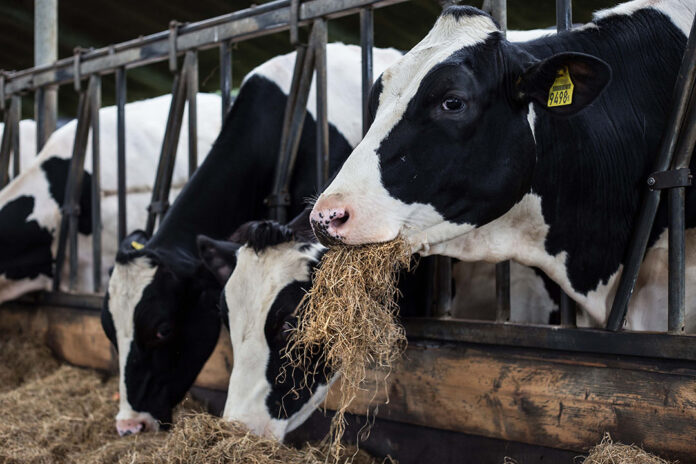A good dairy feeding programme for your dairy cow should consider the quantity and quality in the feeding ration, type of the feed and how or when it is offered.
Typically, a dairy cow will eat 3 per cent of its body weight in dry matter ration per day and the intake depends on multiple factors such as stage of lactation, weight of the cow and the physiology of the animal among others.
Cows producing up to eight litres of milk can depend on good quality forage alone without requiring concentrate supplementation, however, above this, it is advisable to supplement with concentrates.
Feeding dairy cows for efficient production involves supplying five classes of nutrients in proper amounts. The nutrients are energy, protein, minerals, vitamins and water.
Give high quality (neither too fibrous nor too lush) and quantity roughages, for example grass hay and or maize silage with lucerne hay to help minimize costs on concentrate supplementation.
Low forage intake leads to low milk yield, rumen acidosis and milk fat depression. The ration should also contain about 16 per cent crude protein since it is not stored in the animal’s body, therefore, must be supplied daily to avoid depression in milk production.
The best sources of protein are legume forages such as lucerne and desmodium. Where only high-fibre, low-quality forages are available, high-energy feeds (concentrates) are needed for supplementation. Feeds such as maize, barley, or oilseeds complement low energy feeds.
The right way to maintain dairy cow teats for higher, quality milk production
Energy is the most important nutrient for driving milk production and is needed for other normal body functioning of the cow. The most determinant factor in feed intake is the stage of lactation of the cow.
High producing cows usually cannot consume adequate feeds during early lactation to meet their requirements, thus, use energy stored in the body leading to loss of body weight, which should be kept to a minimum to avoid metabolic disturbances.
Therefore, the percentage of crude protein in the ration should be higher during this period to maximize the efficiency of energy utilization and to meet the requirement of protein for maximum milk production.
In mid lactation, there is higher dry matter intake with no more weight losses thus the key strategy here is to maximize dry matter intake and the level of effective fibre should be maintained at a point similar to that of early lactation but the protein requirement is lower (about 15 to 17 per cent).
Feed intake depends on unlimited access to fresh, clean water. Cows drink about five litres of water for each kilo of milk produced. A cow producing 20 litres of milk will consume 100 litres of water. Also note that cow milk is composed of 87 per cent water, therefore, the more milk produced, the more the water requirement.
Average daily weight gain indicates rate of growth. It helps to identify problems in production and is an indicator of early attainment of puberty/service weight.
Growing heifers are expected to achieve an average growth rate of approximately 0.75kg per day, however, it is affected by many factors, but mainly the animal’s diet. Proper feeding is thus important in boosting daily weight gain.








